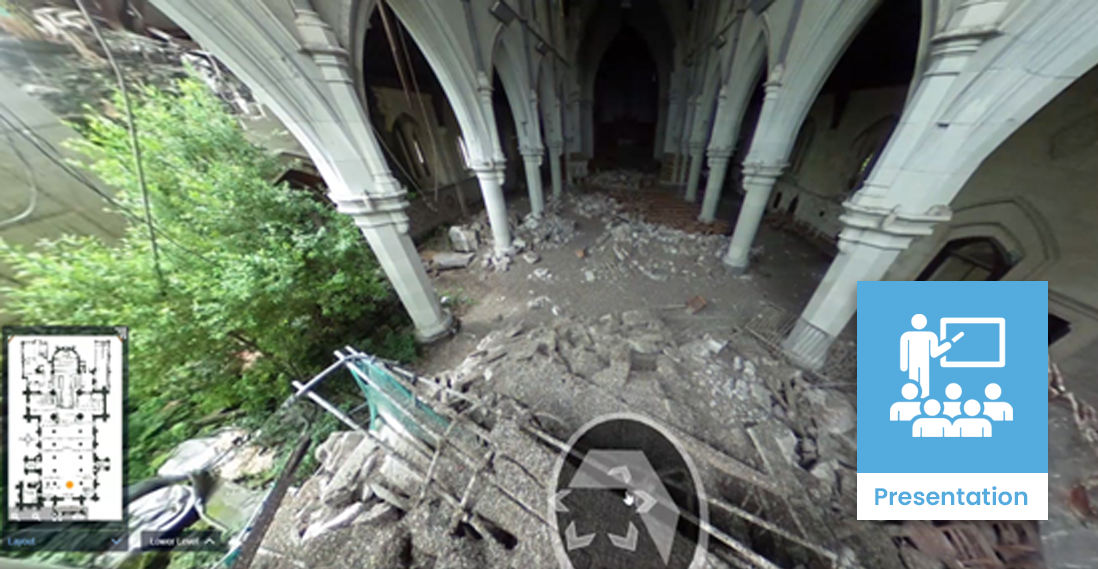Naylor Love: Health and safety manager’s perspective on BIM
Summary
Jen Dransfield, a Health and Safety Advisor at Naylor Love, shares her perspective on how BIM can be used to enhance safety outcomes for workers on construction sites. By using BIM to provide “environmental feedback” and enable collaboration between different parties, the project team has been able to identify and mitigate risks, particularly for challenging projects like the Christchurch Cathedral Reinstatement and the Tower 3 build. Jen’s experience demonstrates the potential of BIM as a powerful tool for improving health and safety on the ground in construction.
Background
Jen Dransfield, a Health and Safety Advisor at Naylor Love, shares her perspective on how BIM can be used to enhance safety outcomes for workers on construction sites. By using BIM to provide “environmental feedback” and enable collaboration between different parties, the project team has been able to identify and mitigate risks, particularly for challenging projects like the Christchurch Cathedral Reinstatement and the Tower 3 build. Jen’s experience demonstrates the potential of BIM as a powerful tool for improving health and safety on the ground in construction.
Jen Dransfield has worked on two key projects where BIM has been used to improve safety outcomes:
1. Christchurch Cathedral reinstatement: A project to restore the Christchurch Cathedral, which was severely damaged in an earthquake. The building was at risk of collapse, and the team faced challenges in accessing certain areas safely due to contamination and debris.
2. Tower 3 Christchurch Hospital: A new build project, that also involves stitching a new lift shaft onto an existing operational hospital building. The project presents challenges in terms of accessibility and working at height.
Video
Approach
On the Christchurch Cathedral reinstatement project, BIM was used to provide “environmental feedback” and help the team plan safe access to challenging areas. The building was initially off-limits, with a 15-meter no-go zone around the perimeter. The team had to progressively strengthen the outside of the building to make it safe enough to enter. Remote capture using point cloud scanning was used to develop a BIM model of the Cathedral, which was then used as a planning resource to support decision making. For example, when the team needed to remove an external wall to access precious War Memorial panelling, they used BIM to identify the risks and develop a safe methodology. By zooming in on the BIM model, Jen could see the bio-contamination and debris inside the building, helping the team refine their approach to ensure worker safety before sending them into the building.
On the Tower 3 build, BIM has been used to assess the accessibility of services on the underside of the floor and to plan for height safety provisions in the lift shaft area. By using BIM to visualise spaces as they will be at the time of the work, the team has been able to identify the type of access equipment needed and the potential attachment points for harness anchor points.
Outcomes and benefits
- Improved risk identification and mitigation: BIM allows the team to identify risks and challenges early in the project, enabling them to develop safe methodologies and access plans. By visualising the project environment and potential hazards, the team can proactively address safety concerns and implement appropriate measures to protect workers.
- Enhanced collaboration: BIM enables different parties (e.g., site managers, foremen, trades people, health and safety managers) to come together and view the project from the same perspective. This facilitates better communication, problem-solving, and a shared understanding of the project’s safety requirements. By fostering collaboration, BIM helps break down silos and promotes a culture of safety throughout the project team.
- Increased worker safety:By using BIM to plan for safe access and identify potential hazards, the team can reduce the risk of accidents and injuries on site. The ability to visualise the project environment and anticipate safety challenges allows the team to implement appropriate controls and provide workers with the necessary equipment and training to perform their tasks safely.
Lessons learnt
BIM is a collaboration tool
The real magic of BIM lies in its ability to bring together the people who do the work (e.g., tradespeople) with those responsible for planning and managing the project (e.g., site managers, health and safety managers) to collaborate and find solutions. By fostering this collaboration and enabling a shared understanding of the project’s safety requirements, BIM can drive significant improvements in health and safety performance.
BIM is a problem-solving tool
While BIM can’t provide all the answers, it can add significant value when used effectively to solve problems and enhance safety outcomes. By making use of the capabilities of BIM, such as visualisation and information integration, the team can easily access the information they need to identify and address safety challenges more efficiently and effectively.

